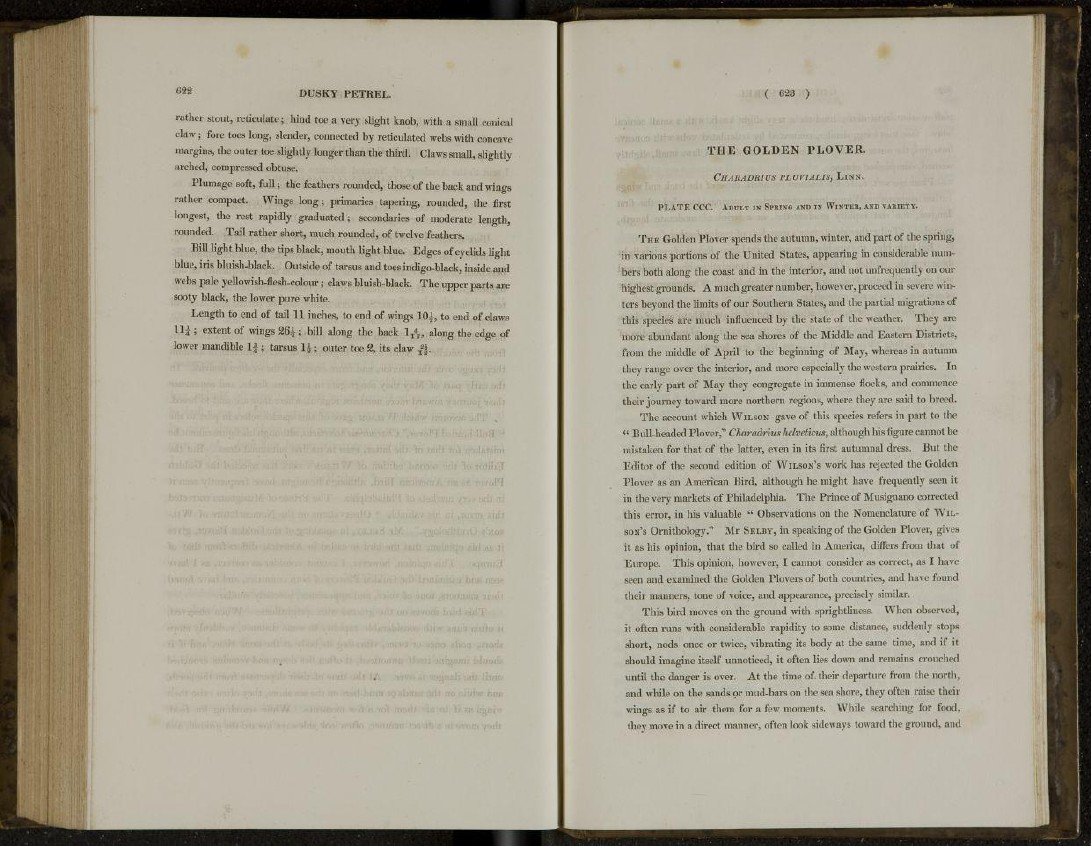
622 DUSKY PETREL.
Father stout, reticulate; hind toe a very slight knob, with a small conical
claw ; fore toes long, slender, connected by reticulated webs with concave
margins, the outer toe slightly longer than the third. Claws small, slightly
arched, compressed obtuse.
Plumage soft, full; the feathers rounded, those of the back and wings
rather compact. Wings long; primaries tapering, rounded, the first
longest, the rest rapidly graduated; secondaries of moderate length,
rounded. Tail rather short, much rounded, of twelve feathers.
Bill light blue, the tips black, mouth light blue. Edges of eyelids light
blue, iris bluish-black. Outside of tarsus and toes indigo-black, inside and
webs pale yellowish-flesh-colour; claws bluish-black. The upper parts are
sooty black, the lower pure white.
Length to end of tail 11 inches, to end of wings 101, to end of claws
11 £ ; extent of wings ; bill along the back 1T
4
2 , along the edge of
lower mandible I f ; tarsus ; outer toe 2, its claw
( 623 )
T H E G O L D E N P L O V E R.
CHARADRIUS PLUVIALIS, LINN.
PLATE CCC. ADULT IN SPRING AND IN WINTER, AND VARIETY.
THE Golden Plover spends the autumn, winter, and part of the spring,
in various portions of the United States, appearing in considerable numbers
both along the coast and in the interior, and not unfrequently on our
highest grounds. A much greater number, however, proceed in severe winters
beyond the limits of our Southern States, and the partial migrations of
this species are much influenced by the state of the weather. They are
more abundant along the sea shores of the Middle and Eastern Districts,
from the middle of April to the beginning of May, whereas in autumn
they range over the interior, and more especially the western prairies. In
the early part of May they congregate in immense flocks, and commence
their journey toward more northern regions, where they are said to breed.
The account which WILSON gave of this species refers in part to the
" Bull-headed Plover,1' Charadrius helveticus, although his figure cannot be
mistaken for that of the latter, even in its first autumnal dress. But the
Editor of the second edition of WILSON'S work has rejected the Golden
Plover as an American Bird, although he might have frequently seen it
in the very markets of Philadelphia. The Prince of Musignano corrected
this error, in his valuable " Observations on the Nomenclature of WILSON'S
Ornithology." Mr SELBY, in speaking of the Golden Plover, gives
it as his opinion, that the bird so called in America, differs from that of
Europe. This opinion, however, I cannot consider as correct, as I have
seen and examined the Golden Plovers of both countries, and have found
their manners, tone of voice, and appearance, precisely similar.
This bird moves on the ground with sprightliness. When observed,
it often runs with considerable rapidity to some distance, suddenly stops
short, nods once or twice, vibrating its body at the same time, and if it
should imagine itself unnoticed, it often lies down and remains crouched
until the danger is over. At the time of. their departure from the north,
and while on the sands or mud-bars on the sea shore, they often raise their
wings as if to air them for a few moments. While searching for food,
they move in a direct manner, often look sideways toward the ground, and